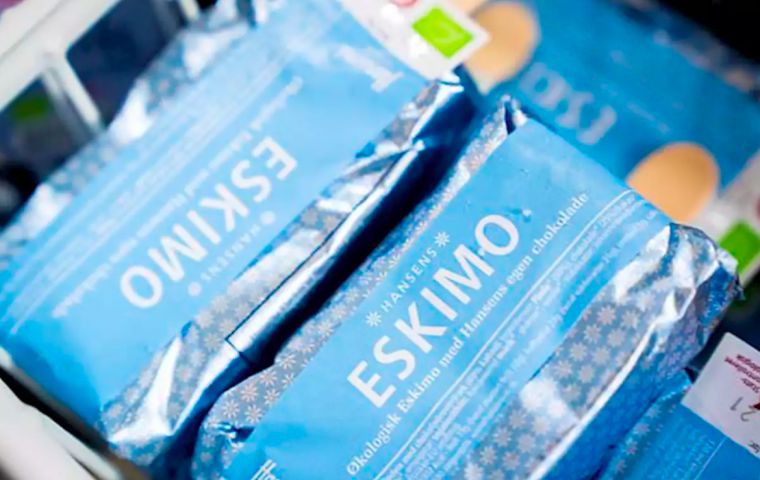MercoPress. South Atlantic News Agency
Danish ice cream maker removes the brand “Eskimo” from one of its products
 The firm said there was now more information and debate “around the derogatory treatment and inequality towards minorities and indigenous people”.
The firm said there was now more information and debate “around the derogatory treatment and inequality towards minorities and indigenous people”. A Danish ice cream maker said on Wednesday it would remove the name “Eskimo” from one of its products in case it offended Inuit and other Arctic people. Hansens Is said it had opposed changing the name of its Eskimo ice lolly but after careful consideration had decided to choose a more suitable name.
The firm said there was now more information and debate “around the derogatory treatment and inequality towards minorities and indigenous people”.
The term Eskimo, used to refer to indigenous people from all over the Arctic, started being criticized by some of the 140,000 indigenous people of the Arctic region in 1970s.
Aaja Chemnitz Larsen, one of two politicians representing Greenland in the Danish Parliament, pointed out that the term meant “eater of raw meat” - although this theory is the subject of debate.
“Eskimo has a pejorative meaning for many Greenlanders. So I think it is only natural to show this level of respect for us,” she told Danish news agency Ritzau.
“After dialogue and examination, it was clear to us that people feel that the name Eskimo reminds of a time of degradation and unjust treatment - which we haven't considered before,” Hansens wrote on their Facebook page.
Chemnitz Larsen welcomed the move and encouraged other brands to follow suit.
But Danish ice cream maker Premier Is said it intended to keep the name “Kaempe Eskimo” (“Giant Eskimo”) for its chocolate-covered ice cream stick, according to media reports.
Greenland, with roughly 55,000 mostly Inuit inhabitants, became a Danish colony in the 18th century and remained so until 1953, when it became a Danish province. In 1979, home rule was established and in 2009 it increased its autonomy through a referendum.




Top Comments
Disclaimer & comment rulesCommenting for this story is now closed.
If you have a Facebook account, become a fan and comment on our Facebook Page!